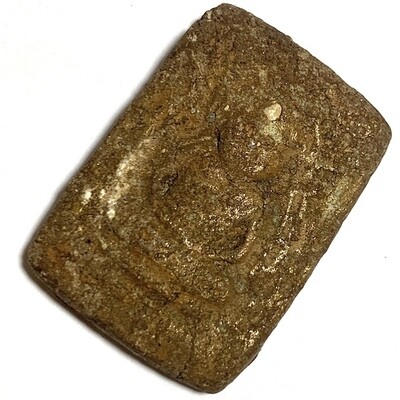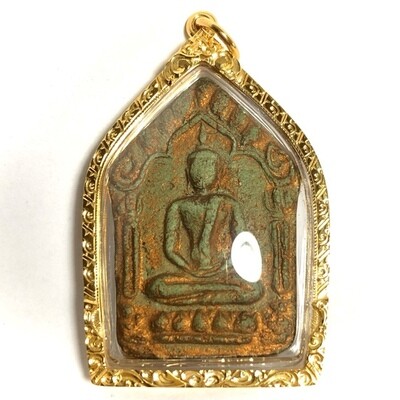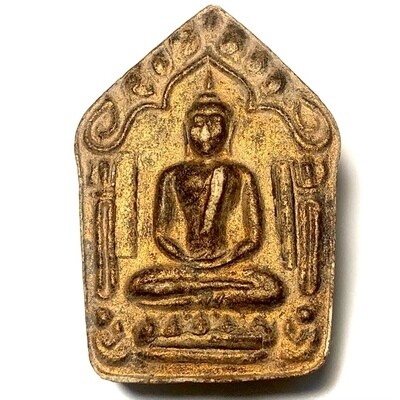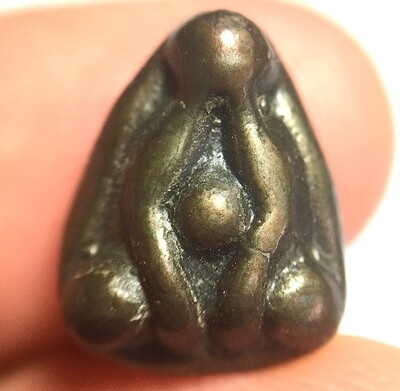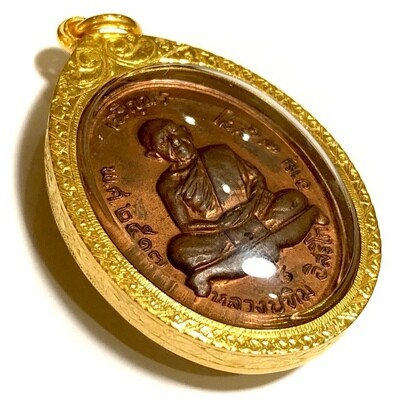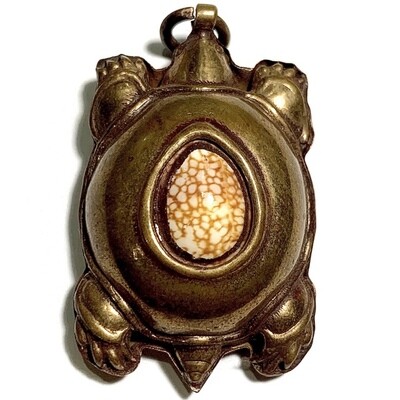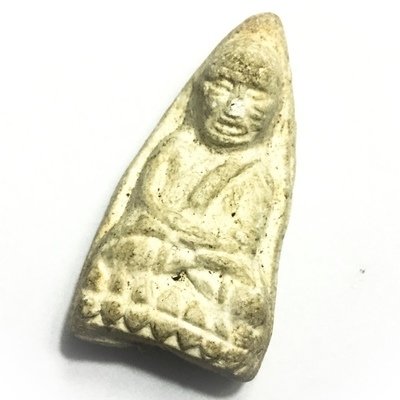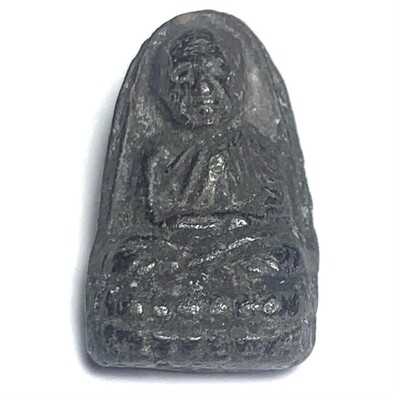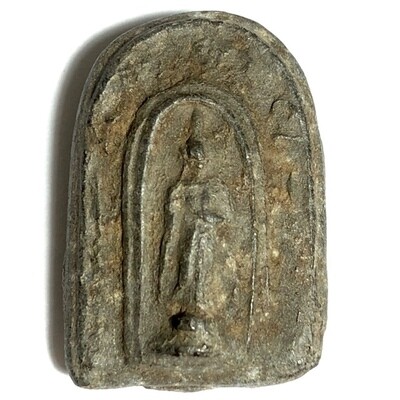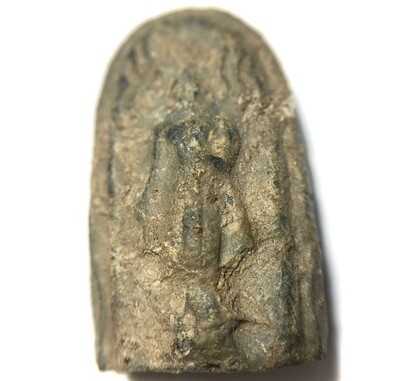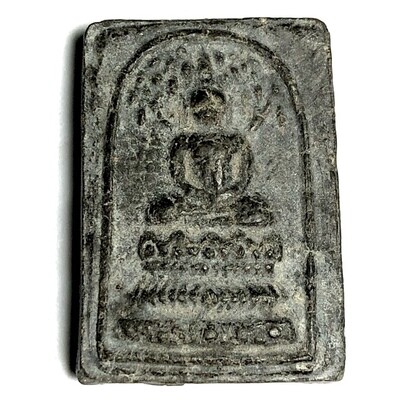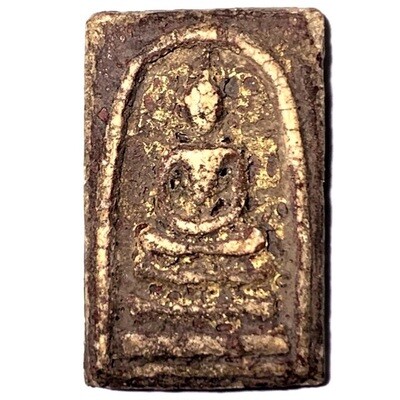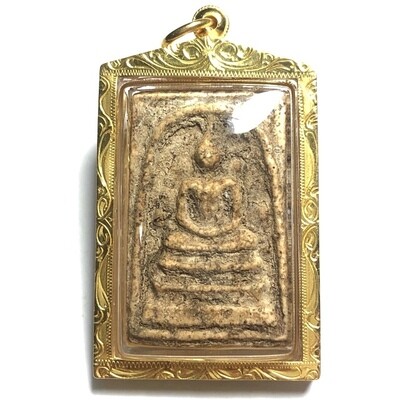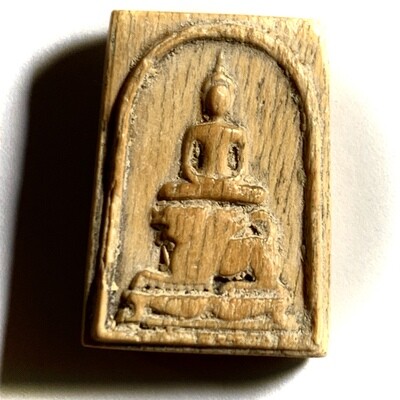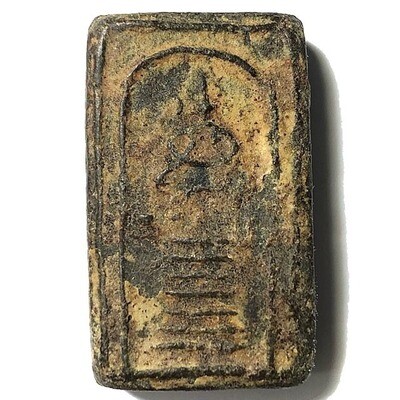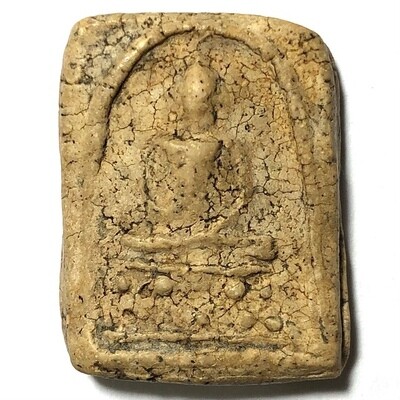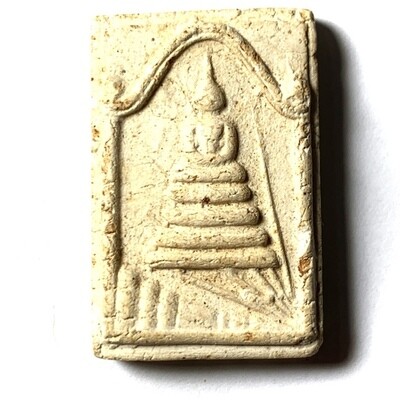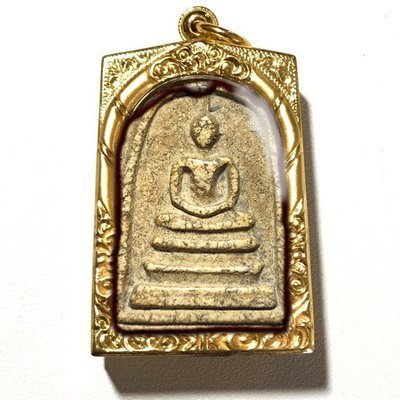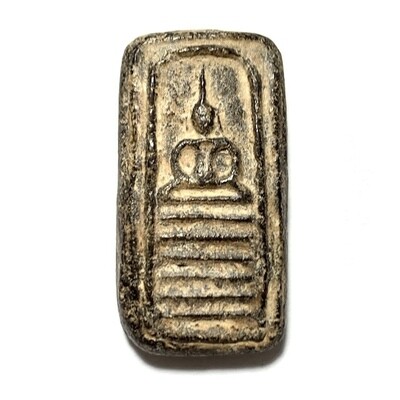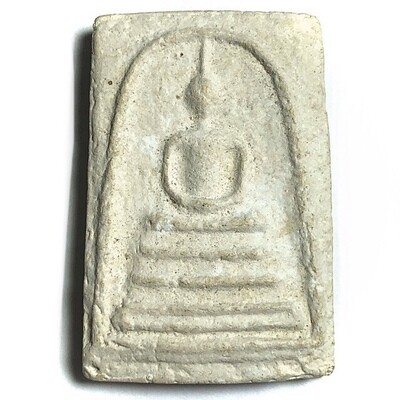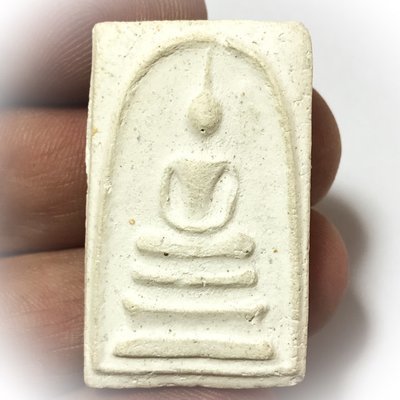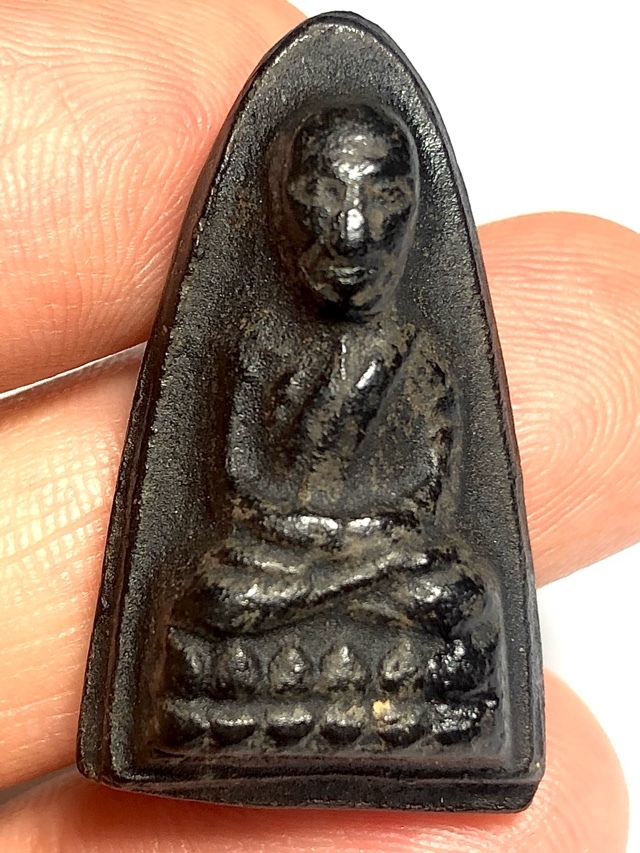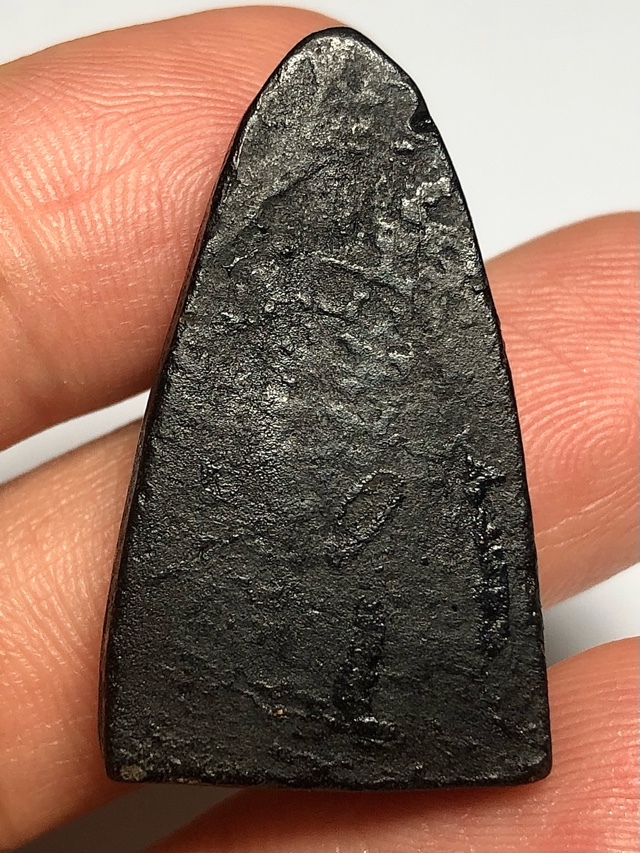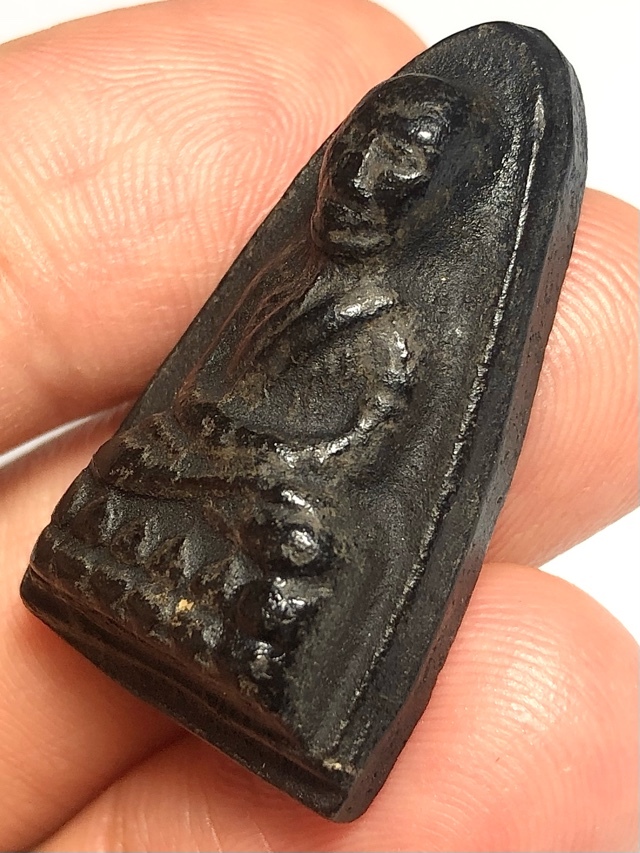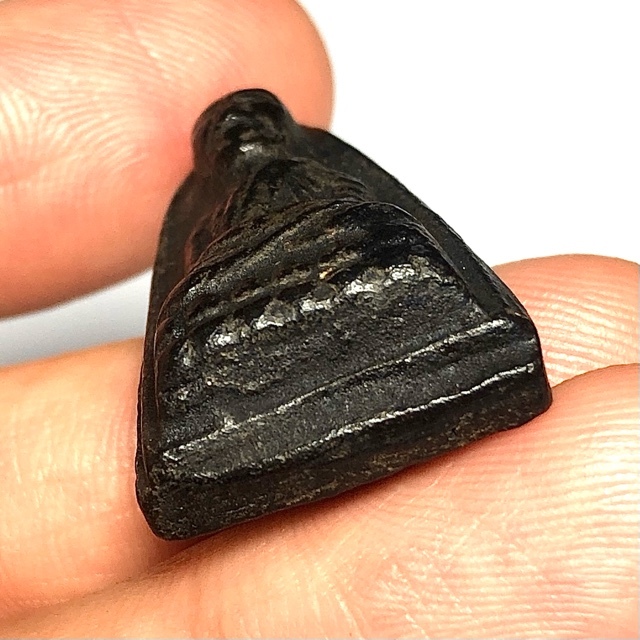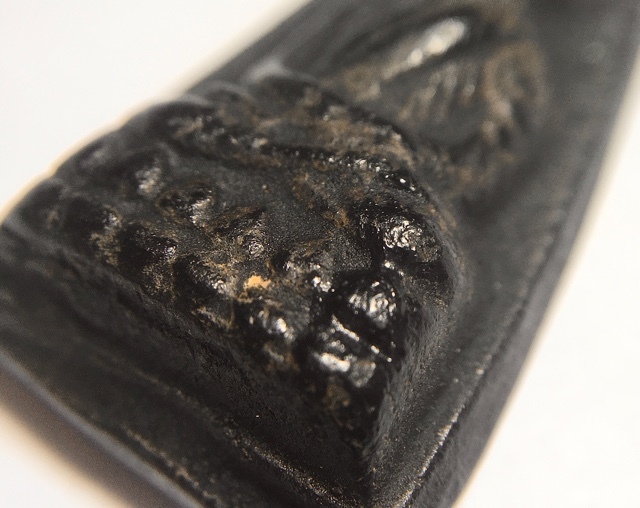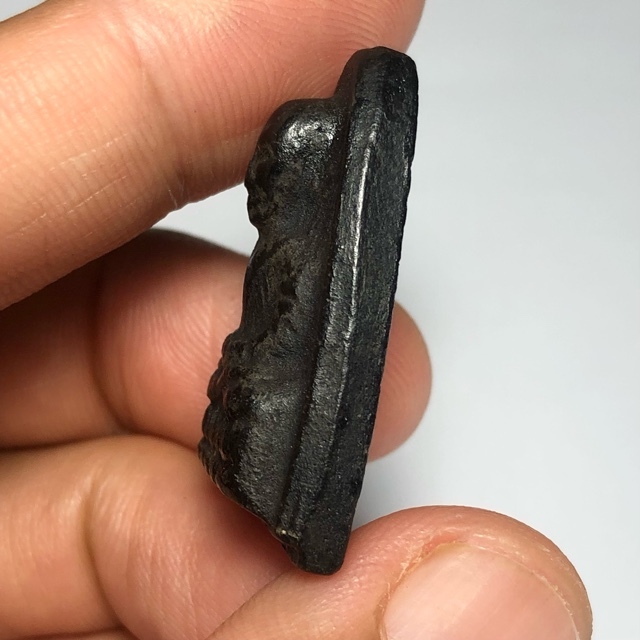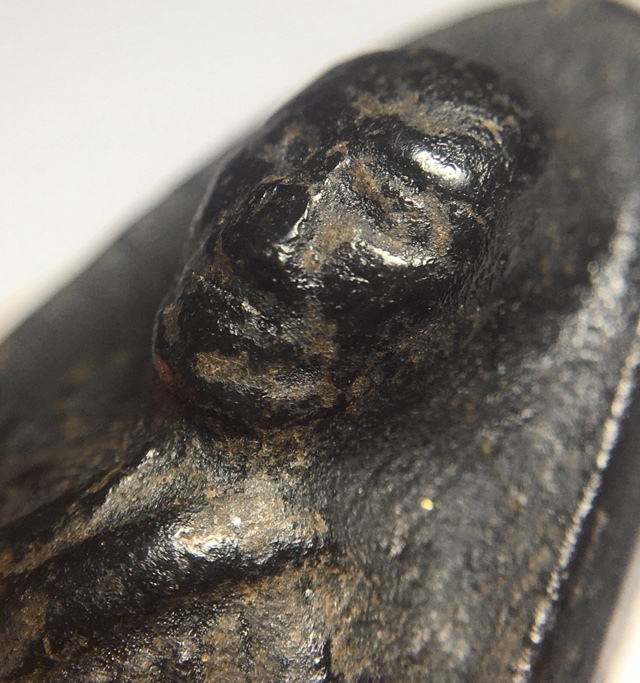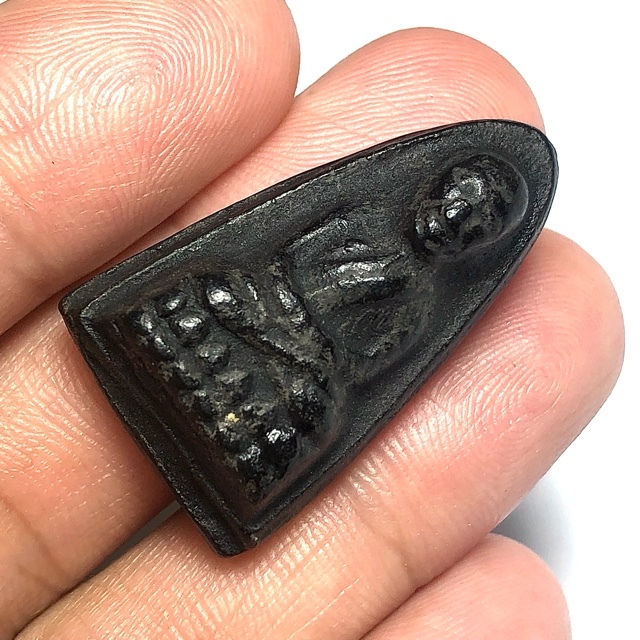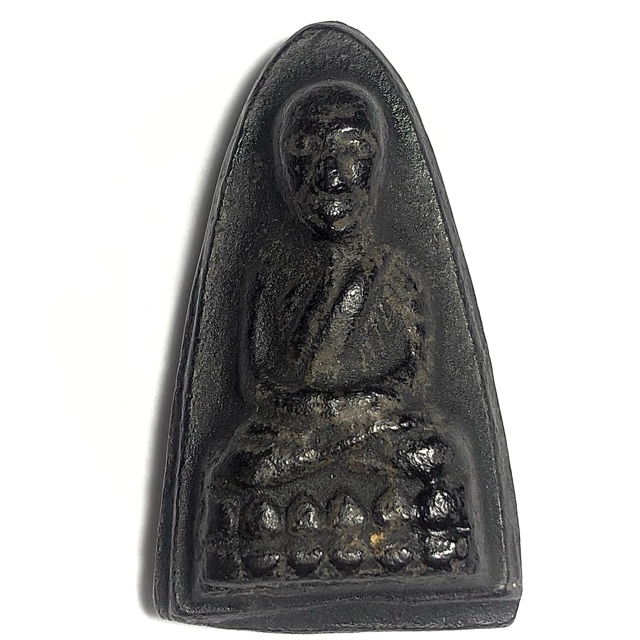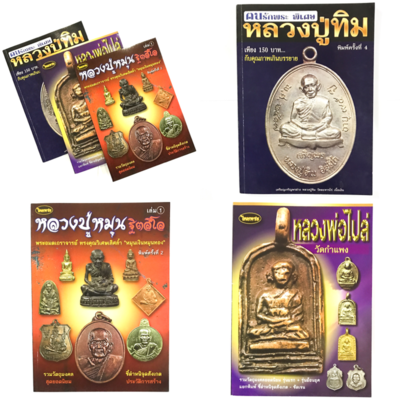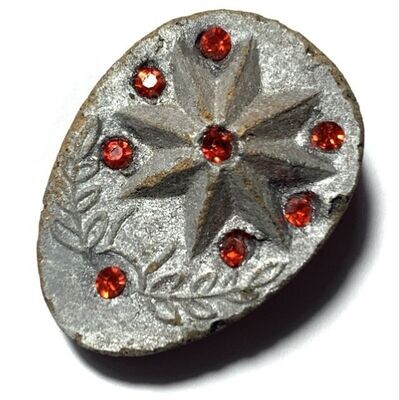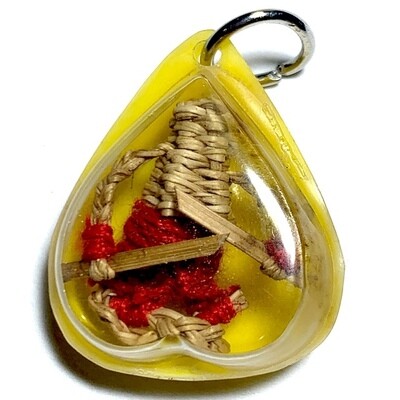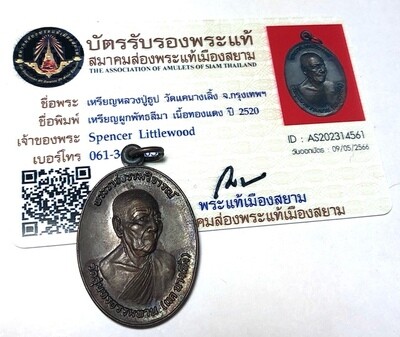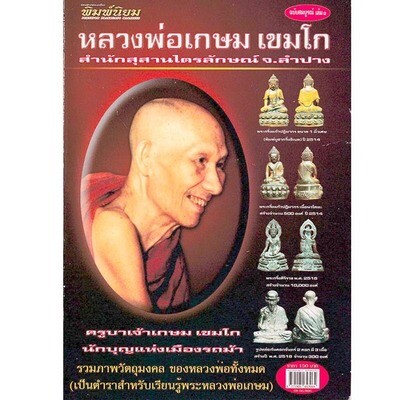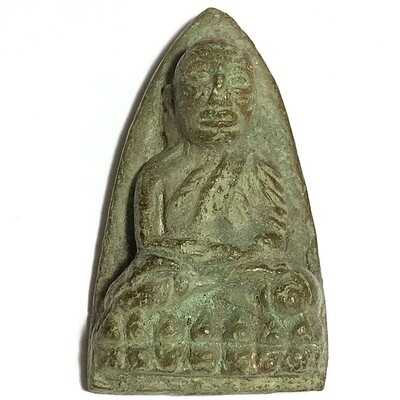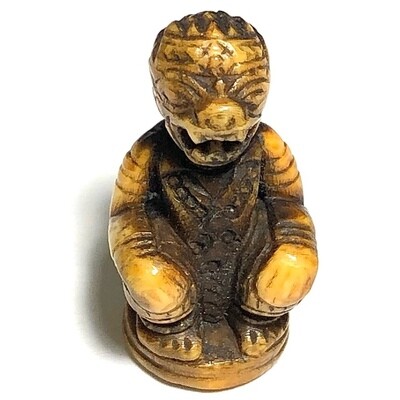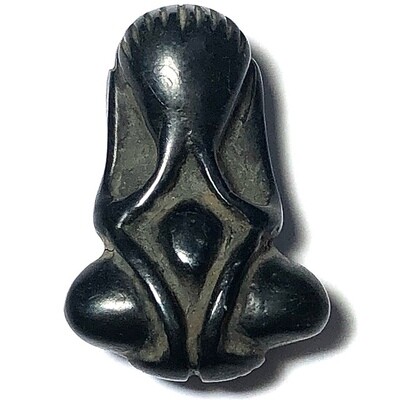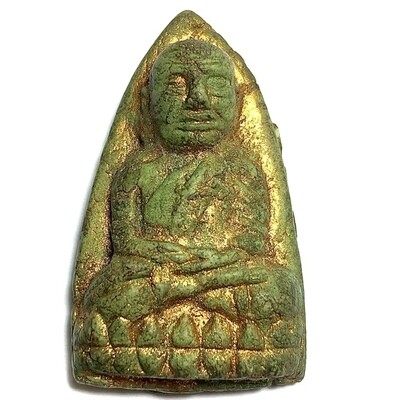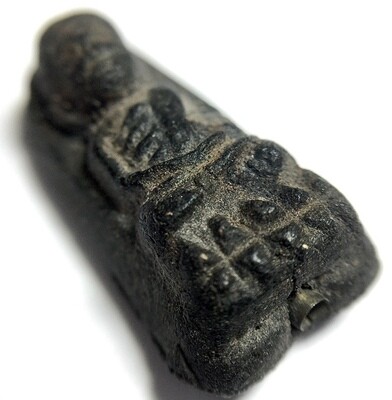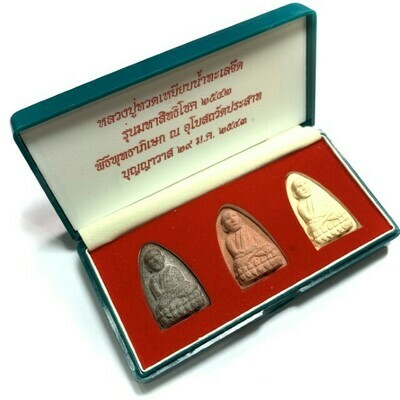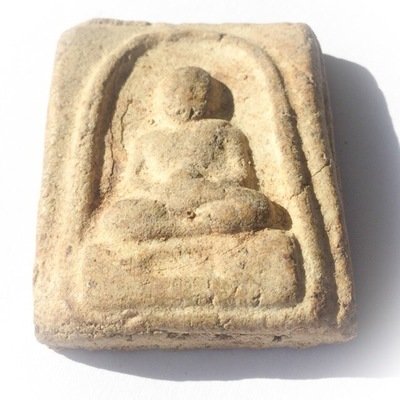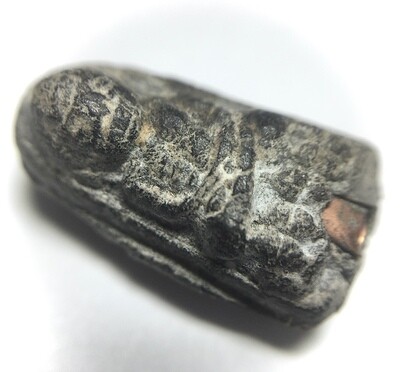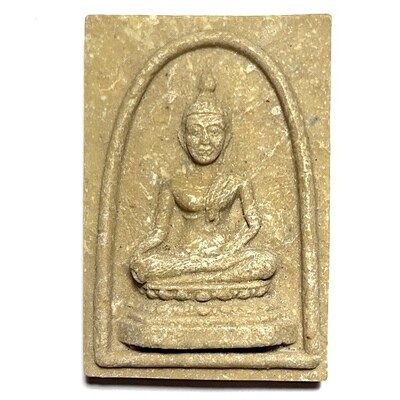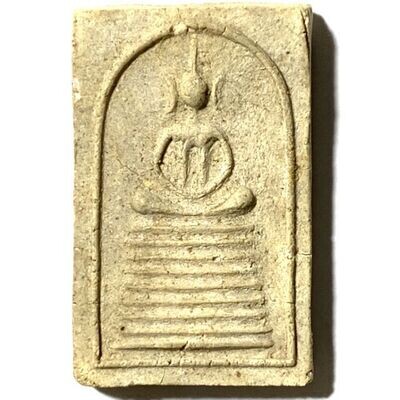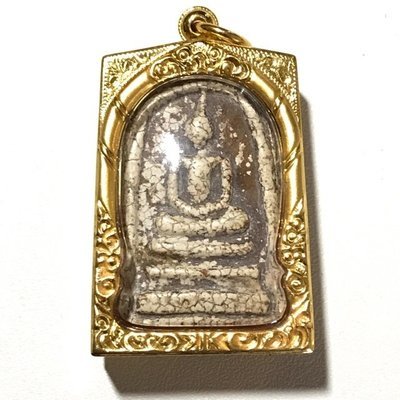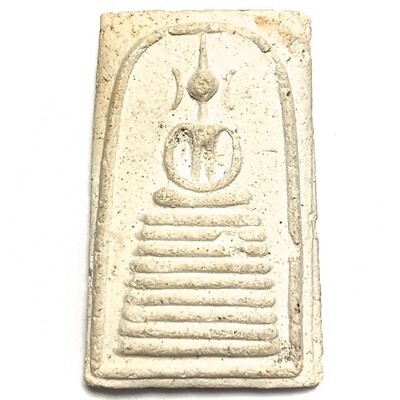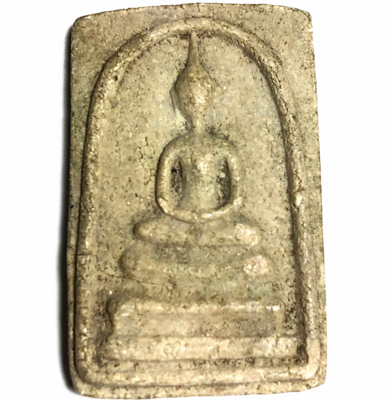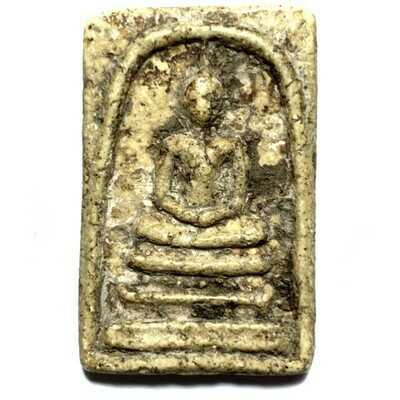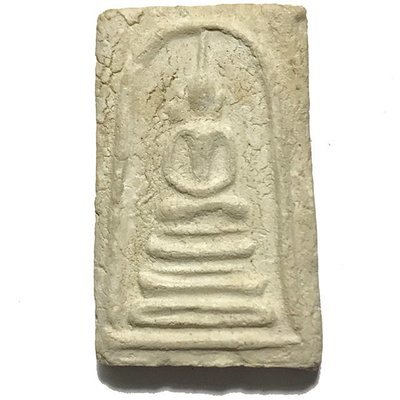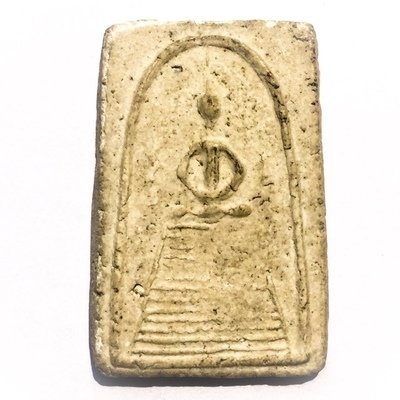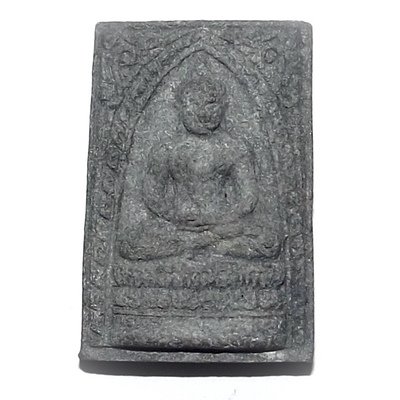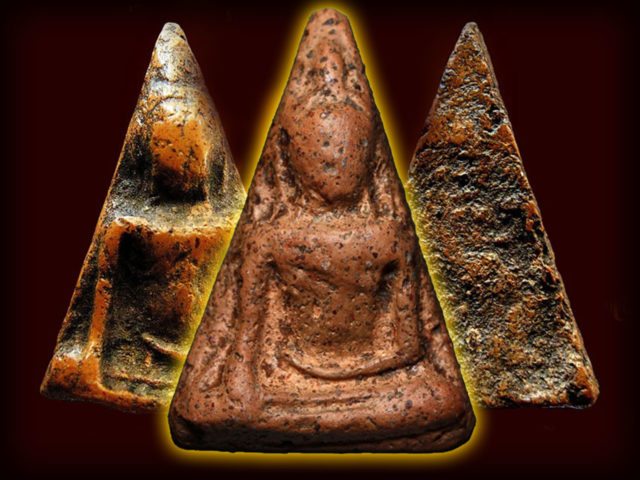
The Legend of Pra Nang Paya Amulet
Pra Nang Paya Benjapakee Amulet
Pra Nang Paya, or ‘Pra Pim Nang Paya, is an amulet from the Ayuttaya Period, which was artistically influenced in its design factors by the Artisans of the Sukhothai Periodic Style. As to the composition of the design of the Pra Nang Paya amulet, it can be said that it contains the work of the Sukhothai Artisan as its heritage, and is a Mark of Preservation of the Eight Periodic Buddhist Art styles found in Thai Sacred Arts and Amulets.
The Pra Nang Paya amulet was first discovered within the Chedi Stupa at Wat Nang Paya in Pitsanuloke, in the year 2444 BE, as King Julalongkorn Rama 5 was visiting Pitsanuloke, to be present for the casting of the Chinarat Replica Buddha at Wat Pra Sri Radtana Sasadaram. The King was invited to come and receive a large number of them as gifts (the best selected), and his Majesty then distributed them to the Government Officials and other Courtiers and Devotees. The remaining amulets, he took back to Bangkok. Apart from the ‘Serm Duang’ Horoscope Improving effects of this Purely Buddhist Amulet, the amulet is Famous for its Metta Mahaniyom, Klaew Klaad, Kong Grapan Chadtri, and Maha Lap powers.
The Pra Nang Paya Benjapakee amulet has 7 different Pim in total.
Pra Nang Paya Pim Khao Koeng.
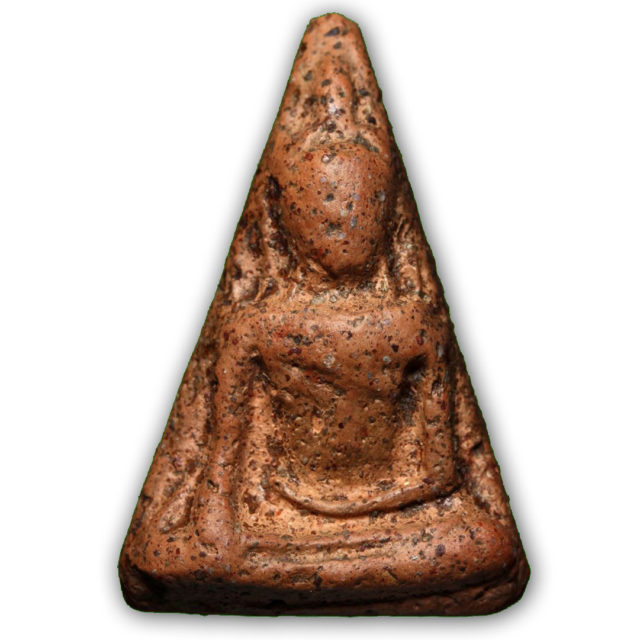
Pra Nang Paya Pitsanuloke Pim Khao Koeng Benjapakee Hiding Place Amulet
Pra Nang Paya Pim Khao Dtrong
(splits into two models; Khao Koeng Tammada, and Khao Koeng Mer Dtok Khaa).
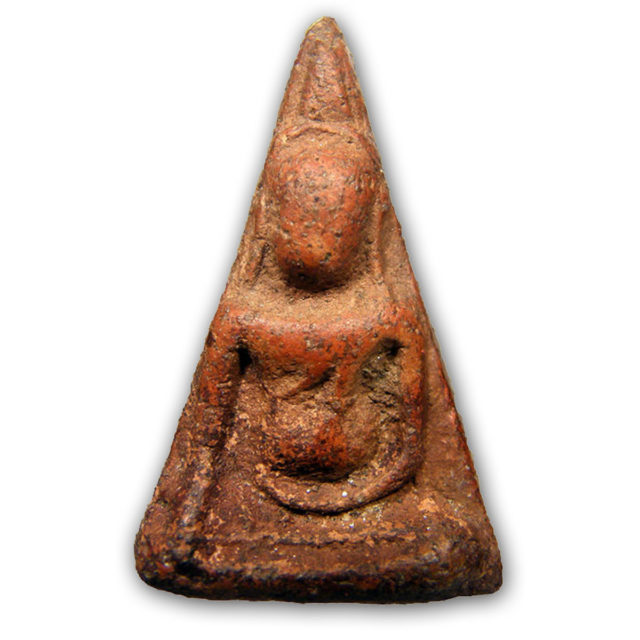
Pra Nang Paya Pitsanuloke Pim Khao Dtrong Benjapakee Amulet
Pra Nang Paya Pim Ok Noon Yai
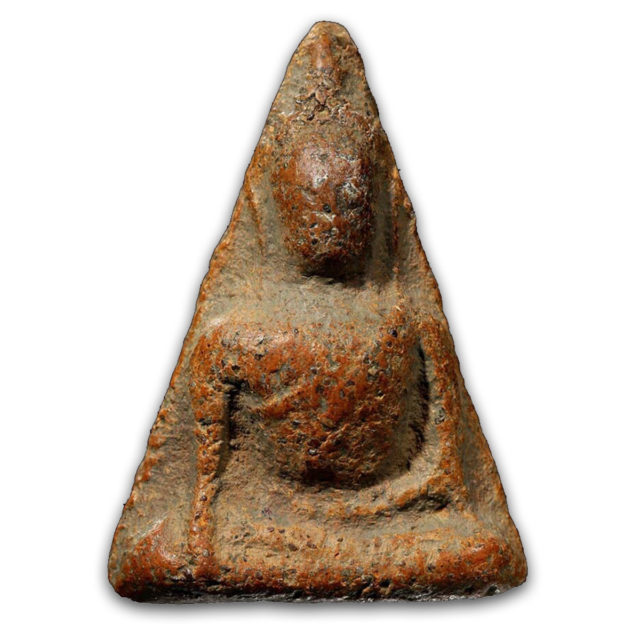
Pra Nang Paya Pim Ok Noon Yai Benjapakee Amulet – a Classic Pra Niyom Master Class Amulet
Pra Nang Paya Pim Ok Noon Lek.
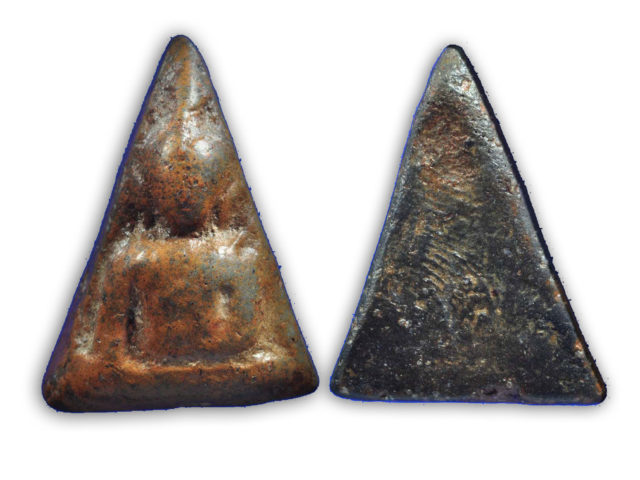
Pra Nang Paya Pitsanuloke Pim Ok Noon Lek Benjapakee Amulet of Historical Fame and Legend
Pra Nang Paya Pim Sangkati.
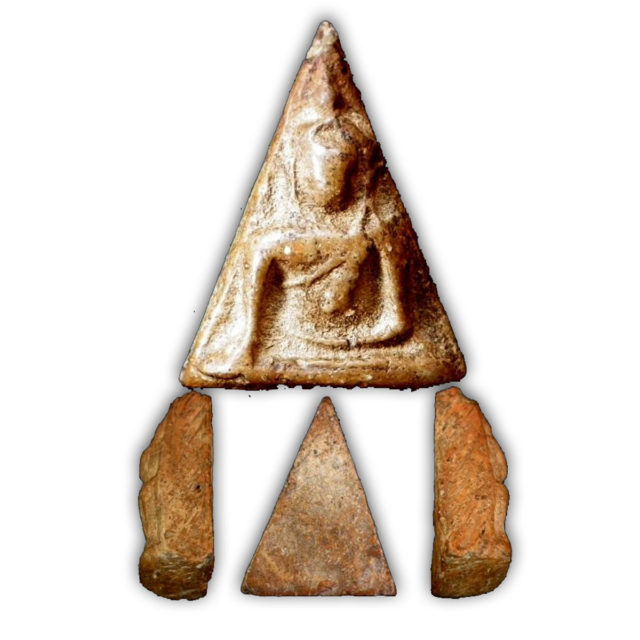
Pra Nang Paya Pitsanuloke Pim Sangkati Benjapakee Amulet – a very rare model to encounter from the seven Pim discovered in the Pitsanuloke Find
Pra Nang Paya Pim Ok Faeb also called ‘Pim Taewada’.
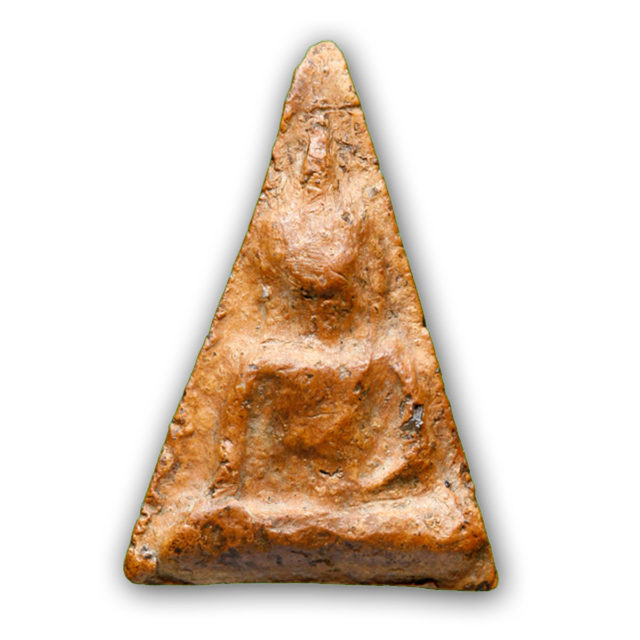
Pra Nang Paya Pim Tewada – a Classic Benjapakee Pra Niyom Master Class Amulet
Pra Nang Paya Pim Pised
(includes various amulets which do not fit in the above categories, such as the Khao Buang, or the Pim Yai Pised).
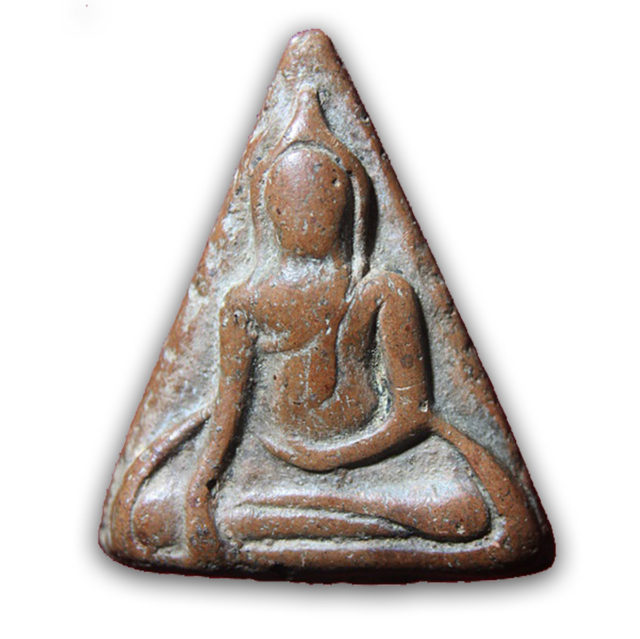
Pra Nang Paya Pim Pised Rare Special Model
Luang Phu Tuad Tao Reed Pim Yai 2513 Nuea Din Phao Pasom Wan LP Tuad 2497 Pra Kroo Bai Diga Wat Chang Hai
Pra Luang Por Tuad Pim Tap Reed Yai Wat Chang Hai, in Nuea Din Kakyayaks sacred marsh peat, released in the year 2513 BE, commissioned by Pra Kroo Bai Diga Khaw, who was the succeeding abbot of Wat Chang Hai after the passing of the previous abbot Ajarn Tim, maker of the 2497 first ever edition of LP Tuad amulets.
This Pim (Model) is in excellent pristine condition, with fully detailed features, and contains Sacred Muan Sarn and Broken Amulets from first edition 2497 Luang Phu Tuad Wat Chang Hai Amulets, and a host of other Sacred Powders, such as Din Kakyayaks, from the sacred Marsh of Luang Phu Tuad in Yala. The Pim Tao Reed amulets were pressed from one of the original block press used by Luang Phu Tim of Wat Chang Hai. Pra Kroo Bai Diga Khaw, was abbot of Wat Chang Hai, from the years 2512 to 2521 BE, and was the real blood nephew of Ajarn Tim himself.
It s said that the Pra Luang Phu Tuad Pim Tao Reed Yai 2513 BE was actually made and blessed over the preceding years before the passing of, and by Ajarn Tim himself, and that Pra Kroo Bai Diga Khaw released them after his passing in 2513, but there has till now been no documentation surfacing to confirm whether Ajarn Tim himself made them, or Pra Kroo Bai Diga. Our proprietor Ajarn Spencer says the answer lies in the ability to view the Muan Sarn powders and know the age of the amulet through the years of experience of viewing, that an expert possesses. For Ajarn spencer himself, he says the Muan Sarn of the surface of the amulet is of an age that is older than 2513 BE, and is hence probably made by Ajarn Tim himself.

Either way, what is recorded in the temple is that these amulets contain a massive amount of broken amulets of the first edutuion 2497 BE Luang Por Tuad amulets, which made this series considered to be extremely powerful, and that this series has a particularly strong admixture of sacred Muan Sarn Powders, with all the same miraculous properties attributed to the LP Tuad 2497 BE amulet and the power of the Famously Powerful and Rare 'Din Kakyayaks' Magickal Peat Earth remaining from the 2497 BE first ever edition of Luang Phu Tuad amulets present within.
The Pra Luang Phu Tuad 2513 series began with little fame, as it was dfistributed during a time when many traveling vaudeville theater performer were passing through the temple and renting amulets, and they used them as part of their show, which consisted of stabbing one of the artists, but they found out that they were unable to use the knives on their accomplice for the magic trick, when accompanied by the amulet, so they began to sell them to the circus show visitors.
At first, people didn't think they were real Wat Chang Hai amulets, until as we know, 'Time always Tells', and people began experiencing miraculous events, and some devotees went to Wat Chang Hai to confirm and investigate, and the truth came out. The series became then very highly regarded for its Kong Grapan Klaew Klaad and Maha Lap Serm Duang magical porperties, and for the high possibility of the amulet being made and blessed by both Ajarn Tim and Pra Kroo Bai Diga Khaw, two great abbots of Wat Chang Hai, who were also Uncle and nephew.
The fact that the traveling performing artists took the amulets around the whole country, through every province, means that this amulet, despite being rare, when seen, may be found in any province of Thailand, not only the south, because it was distributed through the traveling artist devotees of Wat Chang Hai
Kata Bucha Luang Phu Tuad
Namo Potisadto Aakandtimaaya Idti Pakawaa
Namo Potisadto Aakandtimaaya Idti Pakawaa
Namo Potisadto Aakandtimaaya Idti Pakawaa
